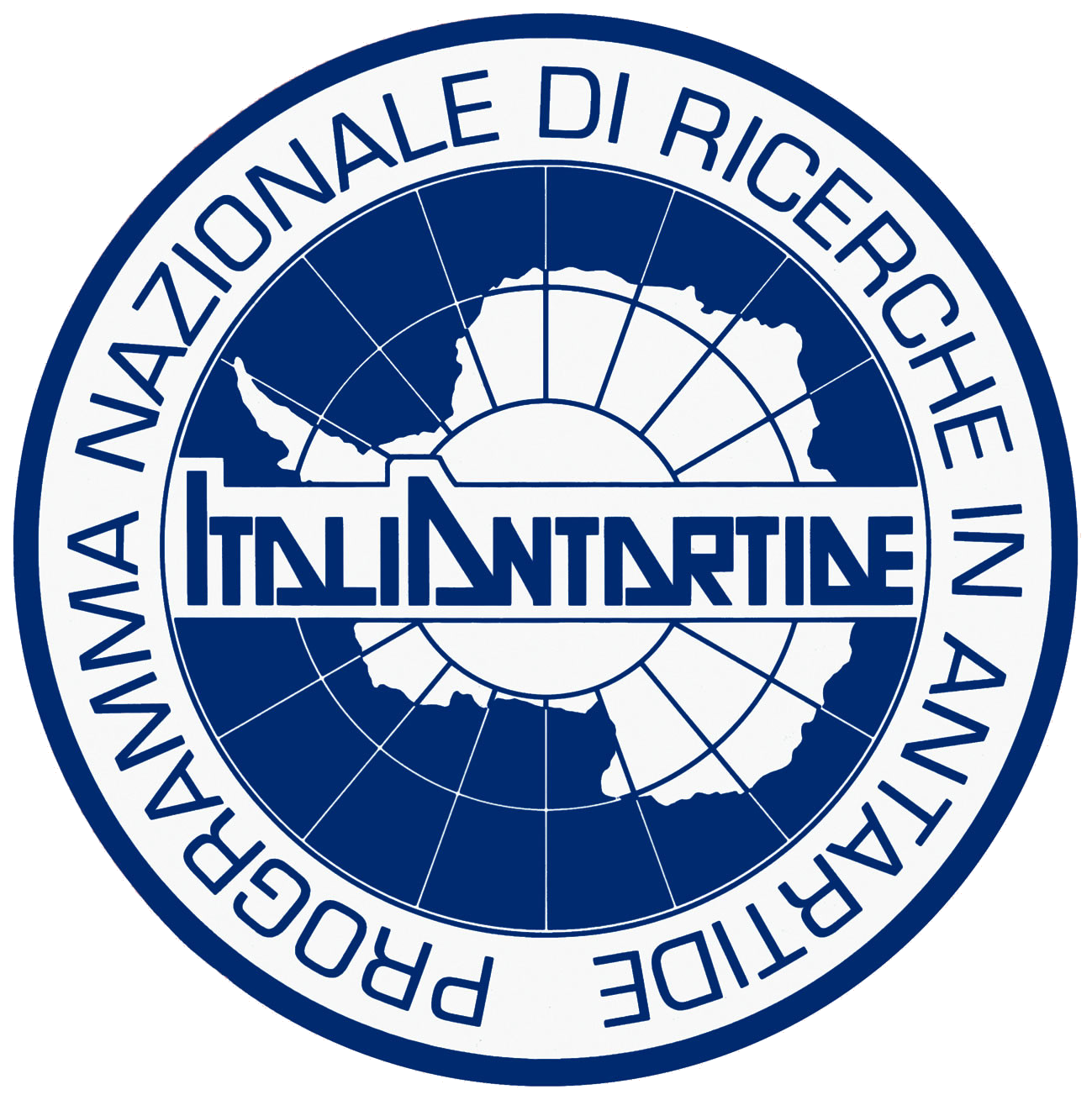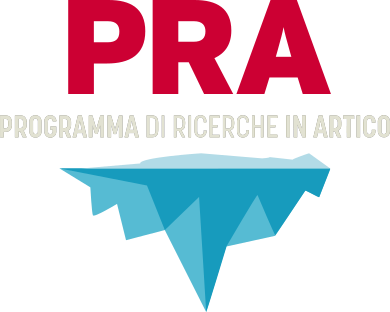English_content
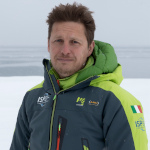 I studied chemistry at the University of Padua and obtained a doctorate in Environmental Sciences from the universities of Venice and Grenoble. Researcher at the Institute of Polar Sciences of the CNR, for years I’ve been involved in the study of climatic archives in ice cores with the implementation of innovative analytical techniques. Mountaineer for work but above all for passion, I’ve participated in important research projects not only on Alpine glaciers, but also in Greenland, Antarctica and Svalbard Islands.
I studied chemistry at the University of Padua and obtained a doctorate in Environmental Sciences from the universities of Venice and Grenoble. Researcher at the Institute of Polar Sciences of the CNR, for years I’ve been involved in the study of climatic archives in ice cores with the implementation of innovative analytical techniques. Mountaineer for work but above all for passion, I’ve participated in important research projects not only on Alpine glaciers, but also in Greenland, Antarctica and Svalbard Islands.
Scopus - Author ID: 36007295400 ResearchGate
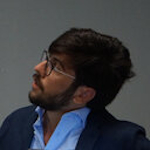 Master’s degree in environmental sciences at the University of Pisa. After a two-months period at the National Natural history Museum in Luxembourg, and after a period spent as a research fellow in the University of Pisa, I enrolled in the Polar Science Ph.D. program at the university of Ca’Foscari in Venice. My research revolves around paleoenvironmental reconstruction in Antarctica’s fjord utilizing calcareous microfossils.
Master’s degree in environmental sciences at the University of Pisa. After a two-months period at the National Natural history Museum in Luxembourg, and after a period spent as a research fellow in the University of Pisa, I enrolled in the Polar Science Ph.D. program at the university of Ca’Foscari in Venice. My research revolves around paleoenvironmental reconstruction in Antarctica’s fjord utilizing calcareous microfossils.
![]() https://orcid.org/0009-0008-2199-379X Research gate
https://orcid.org/0009-0008-2199-379X Research gate
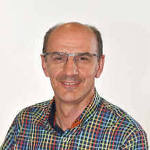 Full Professor at the Ca’ Foscari University of Venice. Since 2003 he has supervised teaching activities in the Degree Courses in Chemistry, in Chemical Sciences for Conservation and Restoration (SCCR), in Materials Science and Technologies and in Environmental Sciences. His research is focused mainly on: 1) studies on the origin, seasonal evolution and environmental fate of organic sulfur compounds of biological origin (dimethyl sulfide, carbon sulfide and dimethyl sulfonyopropionate) produced in the aquatic system; 2) development of analytical methodologies for the determination of organic micro pollutants (PCB, PAH, PCN, PBDE, PCDD, PCDF, IA) in environmental matrices (water, sediment, atmospheric aerosol) by gas chromatography coupled to both low and high resolution mass spectrometry; 3) development of analytical methodologies for the determination of natural organic compounds (amino acids, sugars, methoxyphenols, algal and fungal toxins, etc.. ) and anthropic (fragrances, aromatic pollutants) in water, biota, aerosol, snow and ice by liquid chromatography coupled with mass spectrometry for the study of local, global contamination and climate change. This activity has led to collaborations with various research groups (Griffith University, Australia; University of Charleston, U.S.A.; Boston College, U.S.A.; University of Sarajevo, Bosnia and Herzegovina; University of Belgrade, Serbia; Aristotle University of Thessaloniki, Greece; University of Rijeka, Croatia; University of Tirana, Albania, etc.. ).
Full Professor at the Ca’ Foscari University of Venice. Since 2003 he has supervised teaching activities in the Degree Courses in Chemistry, in Chemical Sciences for Conservation and Restoration (SCCR), in Materials Science and Technologies and in Environmental Sciences. His research is focused mainly on: 1) studies on the origin, seasonal evolution and environmental fate of organic sulfur compounds of biological origin (dimethyl sulfide, carbon sulfide and dimethyl sulfonyopropionate) produced in the aquatic system; 2) development of analytical methodologies for the determination of organic micro pollutants (PCB, PAH, PCN, PBDE, PCDD, PCDF, IA) in environmental matrices (water, sediment, atmospheric aerosol) by gas chromatography coupled to both low and high resolution mass spectrometry; 3) development of analytical methodologies for the determination of natural organic compounds (amino acids, sugars, methoxyphenols, algal and fungal toxins, etc.. ) and anthropic (fragrances, aromatic pollutants) in water, biota, aerosol, snow and ice by liquid chromatography coupled with mass spectrometry for the study of local, global contamination and climate change. This activity has led to collaborations with various research groups (Griffith University, Australia; University of Charleston, U.S.A.; Boston College, U.S.A.; University of Sarajevo, Bosnia and Herzegovina; University of Belgrade, Serbia; Aristotle University of Thessaloniki, Greece; University of Rijeka, Croatia; University of Tirana, Albania, etc.. ).
As part of the National Antarctic Research Programme he was responsible for Research Unit (UO) in 2004-2006; Principal Investigator in 2010-2012; responsible of UO in 2013-2014 and since 2016.
The research activity has led to the publication of over 140 publications of which 126 appear on SCOPUS, 10 chapters of books and about 200 communications at national and international conferences (h-index= 30).
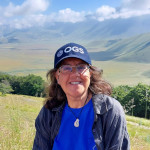 She graduated in Biological Sciences from the University of Siena in 1977, and worked as a research biologist and marine ecologist at the Anton Dohrn Zoological Station in Naples, at the current Ischia Marine Center, from 1983 to 2021, coordinating the Ischia team for some periods. Since 2021 she has been an associated researcher at the National Institute of Oceanography and Experimental Geophysics - OGS in Trieste, she is also associated with ISPRA-Rome (September 2023) and the Polar Scientific Institute of the CNR in Messina (May 2024). She has worked in the field of ecology of benthic biota, and coastal benthic ecosystems, with particular focus on the taxonomy and ecology of polychaete marine worms, and the ecology of seagrass systems, especially Posidonia oceanica. She has also worked in coastal polar environments, participating between 1989 and 2006 in 6 oceanographic expeditions to Antarctica and sub-Antarctica within the PNRA and the German and Spanish programmes, coordinating the research group of the SZN team in Ischia. For over 20 years she has been studying the effects of climate change on the benthos, in relation to both the increase in temperature (heat waves, alien species) and ocean acidification. In this later topic she is studying the ecology and eco-physiology of the benthic biota, including seagrasses, which live in particular coastal hydrothermal systems characterized by CO2 emissions from the seabed (vents) and natural acidification of the waters both at Ischia and in the Aeolian islands. She has supervised approximately 36 master's theses, 11 PhDs and 4 post-docs. She has served as Editor-in-Chief of the Journal Marine Ecology (Wiley; 2005-2013) and has published over 300 scientific papers and 4 books. Passionate about classical and popular music, she completed regular flute studies at the R. Franci music school of Siena.
She graduated in Biological Sciences from the University of Siena in 1977, and worked as a research biologist and marine ecologist at the Anton Dohrn Zoological Station in Naples, at the current Ischia Marine Center, from 1983 to 2021, coordinating the Ischia team for some periods. Since 2021 she has been an associated researcher at the National Institute of Oceanography and Experimental Geophysics - OGS in Trieste, she is also associated with ISPRA-Rome (September 2023) and the Polar Scientific Institute of the CNR in Messina (May 2024). She has worked in the field of ecology of benthic biota, and coastal benthic ecosystems, with particular focus on the taxonomy and ecology of polychaete marine worms, and the ecology of seagrass systems, especially Posidonia oceanica. She has also worked in coastal polar environments, participating between 1989 and 2006 in 6 oceanographic expeditions to Antarctica and sub-Antarctica within the PNRA and the German and Spanish programmes, coordinating the research group of the SZN team in Ischia. For over 20 years she has been studying the effects of climate change on the benthos, in relation to both the increase in temperature (heat waves, alien species) and ocean acidification. In this later topic she is studying the ecology and eco-physiology of the benthic biota, including seagrasses, which live in particular coastal hydrothermal systems characterized by CO2 emissions from the seabed (vents) and natural acidification of the waters both at Ischia and in the Aeolian islands. She has supervised approximately 36 master's theses, 11 PhDs and 4 post-docs. She has served as Editor-in-Chief of the Journal Marine Ecology (Wiley; 2005-2013) and has published over 300 scientific papers and 4 books. Passionate about classical and popular music, she completed regular flute studies at the R. Franci music school of Siena.
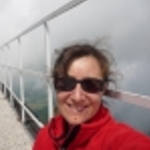 Education and previous professional experience. PhD in Chemistry from the University of Milano (2003). Degree in Chemistry from the University of Milano (2000)
Education and previous professional experience. PhD in Chemistry from the University of Milano (2003). Degree in Chemistry from the University of Milano (2000)
Senior researcher at the Institute of Polar Sciences of the National Research Council of Italy (ISP-CNR), August 2019 – present. Researcher at the Institute of Atmospheric Sciences and Climate of the National Research Council of Italy (ISAC-CNR), July 2011-July 2019. Visiting scientist at the Finnish Meteorological Institute, February 2011- March 2011. Researcher at the Joint Research Center of the European Commission, October 2007-September 2010. Researcher at the University of California San Diego, July 2005-September 2007. Researcher at the University of California Davis, February 2004-July 2005. PhD in Chemistry from the University of Milano (2003) Degree in Chemistry from the University of Milano (2000)
International activities. Editor for "Atmospheric Chemistry and Physics" (since 2013). Editor for "Aerosol and Air Quality Research" (since 2011). Guest Editor for "Atmosphere" special issue on Aerosol Mass Spectrometry (2017). Referee for scientific papers: Atmospheric Chemistry and Physics, Atmospheric Environment, Environmental Pollution, Environmental Science and Technology, Journal of Geophysical Research. Italian expert in the “Expert Group on Black Carbon and Methane” of the Arctic Council (since 2019). Working group leader for organic aerosol source apportionment of the COST Colossal project (2017-2021).
Area of scientific interest: Chemical and physical characterization of atmospheric aerosol with particular attention to the carbonaceous components, their chemical composition, microphysical properties, climate-relevant properties, and formation mechanisms. Cloud - aerosol interaction. Impact of air quality and climate change on fog formation.
Author of 58 publications in peer review journals and 5 chapters in books (h-index 21 – web of science)
Scopus - Author ID: 6602523027 ![]() http://orcid.org/0000-0002-7312-5571 WoS Researcher ID: P-1283-2014 Google Scholar
http://orcid.org/0000-0002-7312-5571 WoS Researcher ID: P-1283-2014 Google Scholar
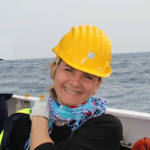 Degree in Geological Sciences - University of Bologna, 1999. Researcher at the CNR ISMAR in Bologna, 2000- 2019. Researcher at the CNR-ISP in Bologna, 2019-present.
Degree in Geological Sciences - University of Bologna, 1999. Researcher at the CNR ISMAR in Bologna, 2000- 2019. Researcher at the CNR-ISP in Bologna, 2019-present.
She deals with sedimentological, mineralogical and biogeochemical reconstructions, transport pathways and depositional processes of the bottom sediments and suspended particles; assessments of impact by inputs of nutrients and contaminants from urban, industrial, harbours, aquaculture and offshore activities in lakes, transitional environments, and coastal to deep marine ecosystems. She specialized in the phosphorus cycle to identify the causes of the onset of dystrophic crises, anoxic crises and mucilaginous phenomena. She studies the biogeochemical cycles of carbon, nutrients and metals, their speciation, early diagenesis processes, bioavailability and benthic flows at the water-sediment interface.
She has been participated to the deployment and management of permanent automatic buoy stations and moorings and the development, calibration and validation of sediment incubators, benthic chambers and landers for the measurement, sampling and analysis of marine environmental parameters for marine researches and monitoring.
She is involved in the study of carbon, nutrients, contaminants and organic matter in particulates and in their calculations of mass balance, vertical flows and lateral transport from the continental shelf to deep basins.
Participation in EC, PRA and PNRA Projects, Conventions with Italian Regional Authorities and Contracts with large and small-medium Enterprises. PI or WP leader of national and international projects. More than 50 oceanographic cruises (25 as Chief Scientist). Supervisor and tutor in over 30 degree thesis and traineeships. Author and co-author of ca. 100 scientific reports, 20 publications, 50 abstracts, 149 citations, H index = 8 (Scopus).
![]() http://orcid.org/0000-0001-5662-2659 Scopus
http://orcid.org/0000-0001-5662-2659 Scopus
 Bachelor in Geology at the Federal University of Rio Grande do Sul (UFRGS) and Master in Geochemistry from the same University. Since 2022 is developing his PhD thesis at Ca’ Foscari University of Venice in the program of Polar Sciences studying organic molecules in an Andean ice core to unveil the paleofire history in the Amazon region.
Bachelor in Geology at the Federal University of Rio Grande do Sul (UFRGS) and Master in Geochemistry from the same University. Since 2022 is developing his PhD thesis at Ca’ Foscari University of Venice in the program of Polar Sciences studying organic molecules in an Andean ice core to unveil the paleofire history in the Amazon region.
 She mainly deals with the development of analytical methods for the determination of legacy and emerging organic pollutants, in various environmental matrices. Among the areas of interest are the air quality, the analysis of pollutants in gas chromatography-mass spectrometry, the determination of microplastics, the application of statistical techniques for the evaluation of pollution sources. She has worked on several European projects, managed collaborations for research activities also with private companies, has been a correlator of various theses. She studied in Venice, where she obtained a bachelor’s degree in chemistry in 2005 and a master’s degree in chemistry and environmental Compatibility in 2007, both with full grades. In 2011 she obtained the double degree of Doctor of Philosophy in Chemical Sciences at the Ca' Foscari University of Venice and of Biological Sciences, at the Universidade Estadual Paulista of Botucatu (San Paolo - Brasile). During her doctorate, she focused mainly on antioxidant power analysis in foods, including fruit and propolis. Between 2009 and 2010 she spent a period of 6 months at the Institute of Biosciences of the University of São Paulo, working mainly on fruits originating from the tropical zone of Brazil and poorly studied until then. From 2012 to 2017 she was a research fellow at the Institute for the Dynamics of Environmental Processes (IDPA-CNR), in 2017-2018 a research technologist of the ECOMOBILITY project at the University of Ca' Foscari Venice and from July 2019 a researcher of the III level at CNR-ISP.
She mainly deals with the development of analytical methods for the determination of legacy and emerging organic pollutants, in various environmental matrices. Among the areas of interest are the air quality, the analysis of pollutants in gas chromatography-mass spectrometry, the determination of microplastics, the application of statistical techniques for the evaluation of pollution sources. She has worked on several European projects, managed collaborations for research activities also with private companies, has been a correlator of various theses. She studied in Venice, where she obtained a bachelor’s degree in chemistry in 2005 and a master’s degree in chemistry and environmental Compatibility in 2007, both with full grades. In 2011 she obtained the double degree of Doctor of Philosophy in Chemical Sciences at the Ca' Foscari University of Venice and of Biological Sciences, at the Universidade Estadual Paulista of Botucatu (San Paolo - Brasile). During her doctorate, she focused mainly on antioxidant power analysis in foods, including fruit and propolis. Between 2009 and 2010 she spent a period of 6 months at the Institute of Biosciences of the University of São Paulo, working mainly on fruits originating from the tropical zone of Brazil and poorly studied until then. From 2012 to 2017 she was a research fellow at the Institute for the Dynamics of Environmental Processes (IDPA-CNR), in 2017-2018 a research technologist of the ECOMOBILITY project at the University of Ca' Foscari Venice and from July 2019 a researcher of the III level at CNR-ISP.
Scopus - Author ID: 26649910100 ResearchGate Google Scholar
The Gruvebadet atmospheric laboratory is located about one kilometre south of Ny-Ålesund and is dedicated to the study of the atmospheric composition and more particularly that of the aerosol. The laboratory was opened in 2010 by the CNR in the building that once housed the Ny-Ålesund miners' showers (Gruve = mine, badet = bathroom in Norwegian).
The laboratory is equipped to house a large number of instruments dedicated to the study of aerosol. There is an accessible roof for the installation of both sampling heads and actual samplers, as well as a series of "passages" for the sampling tubes between the interior of the laboratory and the roof.
The laboratory is managed by the CNR in collaboration with numerous Italian universities: Florence, Perugia, Venice, Turin etc.
The main measurements made in the laboratory are:
- the chemical characterization (organic component and metals) of size segregated atmospheric particulate ;
- measurement of the size distribution of aerosols and their diffusion and radiation absorption properties ;
- the measurement of the carbon component of particulate matter (EC / OC);
- study of new particle formation processes and their ability to form clouds.
In recent years, atmospheric activities have been accompanied by studies of the surface snowpack. The interaction between the atmosphere and snow is one of the topics that most needs to be explored as, for example, the deposition of particulate matter on the snow can accelerate its melting.
The laboratory has attracted more and more interest from foreign researchers; to date, there are numerous active international collaborations on these topics with KOPRI, NPI, the University of Helsinki etc and others.
Gruvebadet - Aerosol laboratory on the website: artico.cnr.it
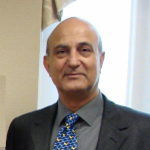 Since 1990 he is full professor of Ecology at the Faculty of Science of the University of Messina (Italy). General Secretary in the following NATO courses coordinated by Dr Trevor Platt, Halifax, Canada: (a) Lipari Island, Italy (12-24 October 1980) on Physiological ecology of Phytoplankton, (b) Bombannes (Bordeaux, France 12-20 May 1982) on Flows of energy and materials in marine ecosyistems: theory and practice, (c) S. Miniato, Italy (1-7 October 1985) on Physiological Ecology of photosynthetic Picopl9ankton in the Ocean. From 1990 to 2002, Italian Delegate to the Scientific Commission of the CCAMLR (Commission for the Conservation of Antarctic Marine Living Resources, Hobart (Tasmania, Australia). Over 60 months accumulated research experience at sea, including the following PNRA Italian Antarctic Expeditions as Principal Investigator: III Exp. (Terra Nova Bay Ecosystem,1987-88), V (South Pacific Sector,1989-90), X ROSSMIZE (Ross Sea Marginal Ice Zone Ecology,1994-95), XIII PIPEX (Pack Ice Plankton Expedition,1997-98), XV PIED (Pack Ice Ecosystem Dynamics 1999-2000), XX SEAROWS (Sea ice Ecology in the Antarctic: ROss and Weddell Seas) on the Polar Queen, Cariboo, Italica (1987-2002), Peri-Antarctic Oceanographic Expeditions in the Strait of Magellan I (1991) and II (1995), and one Arctic canadian cruise by N/R Hudson (1980). He has been Scientific Responsible of the Operative Unit Zooplankton and Micronekton in the following European projects: VECTOR, RITMARE, COCONET, MARINE STRATEGY. From 1968 to now, his research activity has been continuously addressed to issues on the zooplankton and micronekton ecology and biodiversity. Its main fields of study concern: (a) spatio-temporal distribution and daily vertical migrations (DVM) of marine zooplankton and micronekton communities in the Mediterranean and Polar ecosystems, in relation to the physical, chemical and biological water mass structure) (b) brackish environments functioning and biological response to stressor variables, (c) functioning of the coastal and pelagic food chain, with particular regard to the role of euphausiid and mesopelagic fish in the Deep Scattering Layer (DSL) (d) zooplankton role in the carbon cycle, (e) particles size spectrum (OPC) in the study of aquatic ecosystems (f) effects of climate change on the biology and ecology of Antarctic sea-ice and free water zooplankton communities. During 18 PNRA Antarctic expeditions (1987-2018) in Terra Nova Bay, Ross Sea and South Pacific Sector in free water and pack-fast-ice he collected about 6000 samples which are part of the zooplankton and micronekton collection laboratory of the University of Messina. In addition to the classic mesozooplankton and micronekton such as WP2, Indian Ocean Standard Net (IOSN), Bongo 40, IKMT, PHN, advanced electronic multinet are part of its field instrumentation such as BIONESS (1 m2) with 12 nets, MININESS (0.25 m2) with 10 nets 200, 500 and 1000 um, MICRONESS with 4 100 um nets, equipped with a multiparametric probe seabird 11 plus, fluorescence sensor and Optical Plankton Counter (OPC).
Since 1990 he is full professor of Ecology at the Faculty of Science of the University of Messina (Italy). General Secretary in the following NATO courses coordinated by Dr Trevor Platt, Halifax, Canada: (a) Lipari Island, Italy (12-24 October 1980) on Physiological ecology of Phytoplankton, (b) Bombannes (Bordeaux, France 12-20 May 1982) on Flows of energy and materials in marine ecosyistems: theory and practice, (c) S. Miniato, Italy (1-7 October 1985) on Physiological Ecology of photosynthetic Picopl9ankton in the Ocean. From 1990 to 2002, Italian Delegate to the Scientific Commission of the CCAMLR (Commission for the Conservation of Antarctic Marine Living Resources, Hobart (Tasmania, Australia). Over 60 months accumulated research experience at sea, including the following PNRA Italian Antarctic Expeditions as Principal Investigator: III Exp. (Terra Nova Bay Ecosystem,1987-88), V (South Pacific Sector,1989-90), X ROSSMIZE (Ross Sea Marginal Ice Zone Ecology,1994-95), XIII PIPEX (Pack Ice Plankton Expedition,1997-98), XV PIED (Pack Ice Ecosystem Dynamics 1999-2000), XX SEAROWS (Sea ice Ecology in the Antarctic: ROss and Weddell Seas) on the Polar Queen, Cariboo, Italica (1987-2002), Peri-Antarctic Oceanographic Expeditions in the Strait of Magellan I (1991) and II (1995), and one Arctic canadian cruise by N/R Hudson (1980). He has been Scientific Responsible of the Operative Unit Zooplankton and Micronekton in the following European projects: VECTOR, RITMARE, COCONET, MARINE STRATEGY. From 1968 to now, his research activity has been continuously addressed to issues on the zooplankton and micronekton ecology and biodiversity. Its main fields of study concern: (a) spatio-temporal distribution and daily vertical migrations (DVM) of marine zooplankton and micronekton communities in the Mediterranean and Polar ecosystems, in relation to the physical, chemical and biological water mass structure) (b) brackish environments functioning and biological response to stressor variables, (c) functioning of the coastal and pelagic food chain, with particular regard to the role of euphausiid and mesopelagic fish in the Deep Scattering Layer (DSL) (d) zooplankton role in the carbon cycle, (e) particles size spectrum (OPC) in the study of aquatic ecosystems (f) effects of climate change on the biology and ecology of Antarctic sea-ice and free water zooplankton communities. During 18 PNRA Antarctic expeditions (1987-2018) in Terra Nova Bay, Ross Sea and South Pacific Sector in free water and pack-fast-ice he collected about 6000 samples which are part of the zooplankton and micronekton collection laboratory of the University of Messina. In addition to the classic mesozooplankton and micronekton such as WP2, Indian Ocean Standard Net (IOSN), Bongo 40, IKMT, PHN, advanced electronic multinet are part of its field instrumentation such as BIONESS (1 m2) with 12 nets, MININESS (0.25 m2) with 10 nets 200, 500 and 1000 um, MICRONESS with 4 100 um nets, equipped with a multiparametric probe seabird 11 plus, fluorescence sensor and Optical Plankton Counter (OPC).
Research results are documented in more than 240 papers on national and international peer journals. Editor of these books: Atlas of Marine Zooplankton Strait of Magellan I Copepods (1995) and II Amphipods, Mysids, Euphausiids, Ostracods, Chaetognaths, Springer Verlag (1996); Ross Sea Ecology, Springer Verlag 2000; Mediterranean Ecosystems Structure and Processes, Springer Verlag (2001). Editor of the Research Topic "Ecology of Marine Zooplankton and Micronekton in Polar and Sub-Polar Areas” in Frontiers in Marine Biology (2023-2024).
More...
Where we are: the Institute of Polar Sciences occupies the 2nd floor of the DELTA building in the new Scientific Campus of Ca’ Foscari University (address: via Torino, 155, Venezia-Mestre). The new Scientific Campus of Mestre is a modern building complex consisting of five new buildings, two existing buildings and a new university residence.
How to find us: GPS coordinates: Lat. 45, 477790 - Long. 12, 254480 - UTM 33N 285419-5039695 - MAP
- by train: Venezia-Mestre railway station, bus Nr. 31H, stop Torino-Università, or bus Nr. 43, stop Torino-Università. From Institute to railway station, bus Nr. 32H, or Nr. 43. Porto Marghera railway station, 10-15 min walk;
- by car: the Institute can be reached by car with the possibility of parking temporarily inside the campus. Coming from Padua, take exit Venezia, 8 min, 5.3 Km;
- by plane: the nearest airport is Venice Marco Polo Airport. From the airport, bus Nr. 15 (to railway station of Venezia-Mestre), then bus Nr. 31H, stop Torino-Università, or Nr. 43, stop Torino-Università.
The Institute of Polar Sciences (ISP) of the National Research Council was born on June 1st, 2019 with act n.81 on 31/05/2019 of President Inguscio. The idea of a Polar Institute has its roots in research activities, which have expanded over time, starting from the first years of Antarctic research in 1985. The construction of the Italian base in Antarctica (MZS station) before and the base in the Arctic (DI station) afterwards, has allowed the development of two generations of polar researchers who have made these remote environments their natural laboratory and their home away from home.
The National Research Program in Antarctica (PNRA)
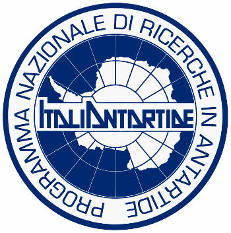 Since its first expeditions in 1968, 1973 and 1978, the CNR has strongly supported the diplomatic action of the MAECI (Ministry of Foreign Affairs and International Cooperation) which led to the accession of Italy to the Antarctic Treaty. The CNR initially contributed to identifying the construction site of the Italian station Mario Zucchelli and is currently coordinating the different lines of scientific activity of the National Research Program in Antarctica (PNRA). The implementation of research in Antarctica is carried out by the national scientific community, of which 51% are university research groups, 23% CNR research groups, 9% from INGV, 5% from ENEA, 4 % from OGS and INAF and the remaining 4 % is carried out by other institutions. The scientific priorities identified within the framework of the National Research Program in Antarctica, are mostly multidisciplinary, and can be traced around the following topics: dynamics of the atmosphere and climate processes, dynamics of the polar ice cap, solid earth dynamics, polar ocean dynamics, Sun-Earth relationships and space-weather, the universe above Antarctica, evolution, adaptation and biodiversity, humankind in extreme environments, environmental contamination, paleoclimate, environmental issues and risks, as well as technology: innovation and experimentation. In many of these research areas, the CNR’s activity, thanks to its research network, is at an excellent level, although it is still fragmented into numerous institutes belonging to various departments.
Since its first expeditions in 1968, 1973 and 1978, the CNR has strongly supported the diplomatic action of the MAECI (Ministry of Foreign Affairs and International Cooperation) which led to the accession of Italy to the Antarctic Treaty. The CNR initially contributed to identifying the construction site of the Italian station Mario Zucchelli and is currently coordinating the different lines of scientific activity of the National Research Program in Antarctica (PNRA). The implementation of research in Antarctica is carried out by the national scientific community, of which 51% are university research groups, 23% CNR research groups, 9% from INGV, 5% from ENEA, 4 % from OGS and INAF and the remaining 4 % is carried out by other institutions. The scientific priorities identified within the framework of the National Research Program in Antarctica, are mostly multidisciplinary, and can be traced around the following topics: dynamics of the atmosphere and climate processes, dynamics of the polar ice cap, solid earth dynamics, polar ocean dynamics, Sun-Earth relationships and space-weather, the universe above Antarctica, evolution, adaptation and biodiversity, humankind in extreme environments, environmental contamination, paleoclimate, environmental issues and risks, as well as technology: innovation and experimentation. In many of these research areas, the CNR’s activity, thanks to its research network, is at an excellent level, although it is still fragmented into numerous institutes belonging to various departments.
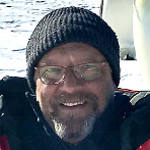 Was born in Saratov, Russia. In 1990 he received his Doctorate Degree (PhD) from the Russian Academy of Sciences. Since 2001, as a CNR employee, he has experience in marine molecular microbiology and has studied the microbial communities thriving in extreme environments, such as deep-sea hypersaline anoxic lakes, shallow thermal vents, crystallizer ponds of solar salterns, Antarctic sea-ice and Antarctic subglacial lakes. He is an internationally renowned expert in isolation and characterization of taxonomically and physiologically new extremely halophilic anaerobes, including sulfidogenic and polysaccharide-degrading haloarchaea, methylotrophic methanogens and previously uncultured representatives of the candidate phylum Nanohaloarchaea. He was the first to isolate the psychrophilic hydrocarbon-degrading bacterium, Oleispira antractica. He is the author of over 180 peer-reviewed publications (Google H index 58, almost 12,000 citation as of October 2021), including articles in Nature, Nature Biotechnology and PNAS. He has co-authored 11 patents. He is editor on board or ad hoc editor of several microbiological journals. Over the past 10 years, he has coordinated four projects and participated in many projects financed by the European Union and other international and national structures, including active Horizon 2020 Project FUTURENZYME (2021-24). He was Chief Scientist during nine Mediterranean oceanographic expeditions and participated in six Italian expeditions in Antarctica. He was co-supervisor of seven PhD Thesis.
Was born in Saratov, Russia. In 1990 he received his Doctorate Degree (PhD) from the Russian Academy of Sciences. Since 2001, as a CNR employee, he has experience in marine molecular microbiology and has studied the microbial communities thriving in extreme environments, such as deep-sea hypersaline anoxic lakes, shallow thermal vents, crystallizer ponds of solar salterns, Antarctic sea-ice and Antarctic subglacial lakes. He is an internationally renowned expert in isolation and characterization of taxonomically and physiologically new extremely halophilic anaerobes, including sulfidogenic and polysaccharide-degrading haloarchaea, methylotrophic methanogens and previously uncultured representatives of the candidate phylum Nanohaloarchaea. He was the first to isolate the psychrophilic hydrocarbon-degrading bacterium, Oleispira antractica. He is the author of over 180 peer-reviewed publications (Google H index 58, almost 12,000 citation as of October 2021), including articles in Nature, Nature Biotechnology and PNAS. He has co-authored 11 patents. He is editor on board or ad hoc editor of several microbiological journals. Over the past 10 years, he has coordinated four projects and participated in many projects financed by the European Union and other international and national structures, including active Horizon 2020 Project FUTURENZYME (2021-24). He was Chief Scientist during nine Mediterranean oceanographic expeditions and participated in six Italian expeditions in Antarctica. He was co-supervisor of seven PhD Thesis.
PARTICIPATION IN INTERNATIONAL VALUATION COMMITTEE:
2007-currently: Referee in Peer Review Evaluations of the European Research Council (ERC). EMM Registration Number: EX2006C118906.
2018-currently: Expert in Faculty 1000 Prime Opinions: https://facultyopinions.com/prime.
MEMBERSHIP IN PROFESSIONAL SOCIETIES:
2012-currently: Italian Society of Agro-Food and Environmental Microbiology (SIMTREA).
2016-currently: Society for General Microbiology, SGM, UK.
2017-currently: The Interregional Russian Microbiological Society, IRMS.
RESEARCHER ID H-1829-2016 Scopus - Author ID: 7005111470 ![]() https://orcid.org/0000-0003-1418-363X Google Scholar
https://orcid.org/0000-0003-1418-363X Google Scholar
 Ice Memory is an international Research Project, recognized by UNESCO, which aims to preserve a testimony from current glaciers, threatened by global warming, for future generations. The project aims to collect ice cores from glaciers all over the world and to store them in a library to preserve the information that such real archives of past eras can provide. For this purpose, a site has been set up in Antarctica, where the cores will be transferred and stored to safeguard the information contained therein for future generations of scientists.
Ice Memory is an international Research Project, recognized by UNESCO, which aims to preserve a testimony from current glaciers, threatened by global warming, for future generations. The project aims to collect ice cores from glaciers all over the world and to store them in a library to preserve the information that such real archives of past eras can provide. For this purpose, a site has been set up in Antarctica, where the cores will be transferred and stored to safeguard the information contained therein for future generations of scientists.
Starting in 2015 various core drilling campaigns in different parts of the planet have been performed:
- Col du Dôme, Mt Bianco, Italy
- Nevajo Illimani, Bolivia
- Mt Elbrus, Georgia
- Altai, Russia
- Grand Combin, Switzerland
Contact person: carlo.barbante AT cnr.it
For further information visit www.ice-memory.org
 Ministero dell'Universita e Ricerca
Ministero dell'Universita e Ricerca
Programma Ricerche Artico
Programma Nazionale di Ricerca in Antartide
 Ministero degli Affari Esteri e della Cooperazione Internazionale
Ministero degli Affari Esteri e della Cooperazione Internazionale
L'Italia e l’Artico
L’Italia e l’Antartide
CNR-ISP
National Research Council
Institute of Polar Sciences
c/o Scientific Campus - Ca' Foscari University Venice - Via Torino, 155 - 30172 VENEZIA MESTRE (VE)
Phone: +39 041 2348547 - E-mail: protocollo.isp AT pec.cnr.it
Fax: +39 041 2348 549 - Codice Fiscale: 80054330586 - P.I.:02118311006
Unless otherwise indicated, the content of this site is licensed : Attribution Non Commercial Share Alike 4.0 International (CC BY-NC-SA 4.0)
Privacy policy e Cookie policy - Transparent administration (CNR)
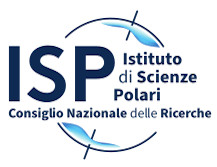






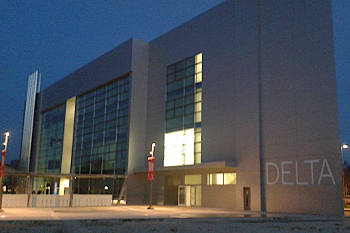
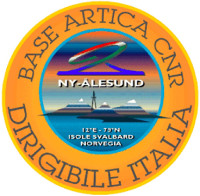 The Italian presence in the Arctic became permanent in the mid-nineties, thanks to the opening of the CNR station in the Svalbard Islands. In recent years, the interests of the Italian scientific community have been extended to other remote areas such as Greenland, areas of the Arctic Ocean, the Tibetan plateau and the Himalayas. In addition to the CNR, OGS, ENEA, INGV, INAF, ASI and some universities carry out research activities in these areas. In addition, Italy has strong economic interests in the Arctic with numerous industries that are active in this area, including ENI, Finmeccanica, Telespazio, E-geos, and Fincantieri. Since 1997 the has CNR carried out research in Ny-Ålesund in cooperation with national and international universities and other scientific institutions. The topics include climate, manmade pollution, instability of the ozone layer, the physical properties of aerosols and clouds in their role in radiation balances, ecology, genetics, physiology, biochemistry and the molecular and cellular biology of polar organisms, the optical properties of glacial surfaces, geochemistry, environment and permafrost, oceanography aimed at studying the transfer of energy and matter in relation to glacial coverage and, finally, historical and geographical studies that evaluate the Italian contribution to polar exploration and research. Recently there has been an intensification in the study of legal issues of specific to the Arctic with advice given to the Ministry of Foreign Affairs within the framework of the Arctic round table.
The Italian presence in the Arctic became permanent in the mid-nineties, thanks to the opening of the CNR station in the Svalbard Islands. In recent years, the interests of the Italian scientific community have been extended to other remote areas such as Greenland, areas of the Arctic Ocean, the Tibetan plateau and the Himalayas. In addition to the CNR, OGS, ENEA, INGV, INAF, ASI and some universities carry out research activities in these areas. In addition, Italy has strong economic interests in the Arctic with numerous industries that are active in this area, including ENI, Finmeccanica, Telespazio, E-geos, and Fincantieri. Since 1997 the has CNR carried out research in Ny-Ålesund in cooperation with national and international universities and other scientific institutions. The topics include climate, manmade pollution, instability of the ozone layer, the physical properties of aerosols and clouds in their role in radiation balances, ecology, genetics, physiology, biochemistry and the molecular and cellular biology of polar organisms, the optical properties of glacial surfaces, geochemistry, environment and permafrost, oceanography aimed at studying the transfer of energy and matter in relation to glacial coverage and, finally, historical and geographical studies that evaluate the Italian contribution to polar exploration and research. Recently there has been an intensification in the study of legal issues of specific to the Arctic with advice given to the Ministry of Foreign Affairs within the framework of the Arctic round table. 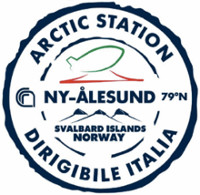 Contrary to the National Antarctic Research Programme, research in the Arctic has not received structured funding until very recently. However, within the CNR, the Department of Earth Sciences and Technologies for the Environment (
Contrary to the National Antarctic Research Programme, research in the Arctic has not received structured funding until very recently. However, within the CNR, the Department of Earth Sciences and Technologies for the Environment (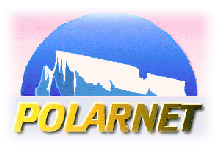 On December 6th, 2006, the CNR, with the
On December 6th, 2006, the CNR, with the 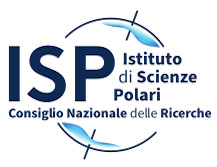 Italian researchers involved in research in polar areas and other remote areas of the planet are involved in highly interdisciplinary research in life sciences, Earth and climate sciences, marine sciences, atmospheric and space sciences, in addition to technological innovation. But national research in polar areas has often been very fragmented and scarcely visible in an international context, because, although carried out within highly qualified research groups, they have so far only been individually recognizable and not associated with a national structure.
Italian researchers involved in research in polar areas and other remote areas of the planet are involved in highly interdisciplinary research in life sciences, Earth and climate sciences, marine sciences, atmospheric and space sciences, in addition to technological innovation. But national research in polar areas has often been very fragmented and scarcely visible in an international context, because, although carried out within highly qualified research groups, they have so far only been individually recognizable and not associated with a national structure. 